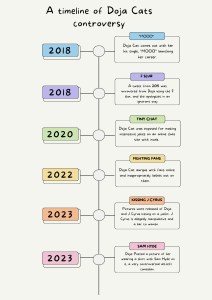What position do you hold?
May 4, 2016
Are you a first-born child? Are you a middle child? Are you a last-born child? Are you and only child? If you answered yes to any of those questions, then you have a birth order. According to psychologydictionary.org, birth order can be defined as “the ordinal position by birth of a child in relation to one or more other siblings. Among a number of siblings, it is also the rank of a child as determined by his or her age. It exerts more of an effect on personality rather than on intelligence. Its role in personality development was first proposed by Austrian doctor Alfred Adler (1870-1937).”
With birth order there comes many different traits that each category holds. First born children are typically leaders, not only in their family dynamic, but as well as in the real world. According to parentsmagazine.com, first born children also tend to be reliable, conscientious, structured, cautious, controlling, and achievers. As first born children mature into adults, it is said that the characteristics they have as a child tend to stay with them for life. CBSNews.com provided some famous examples of first born children, Walter Cronkite, Oprah Winfrey, Rush Limbaugh, who are famous newscasters and TV talk show hosts.
While the first born child is typically a leader, middle children are often seen as the peacemakers. Middle children are often seen as people-pleasers, rebellious, and friendly, according to parentsmagazine.com. People tend to associate what is called the “Middle Child Syndrome” with middle children who are prime examples of all the characteristics stated before. According to , the “Middle Child Syndrome” was discovered by Austrian Psychoanalyst, Dr. Alfred Adler; Adler himself was a middle child. Adler was the first to bring light to the effects that birth order have on a child’s personality. Adler described the “Middle Child Syndrome” as, “Middle children often feel left out and invisible, a contrast from their older and younger siblings.” Like first born children, middle children often carry their childhood characteristics and the “Middle Child Syndrome” with them as they mature and become adults.
Parentsmagazine.com explained that unlike middle children and first born children, last born children, often referred to as the babies of the family, are more likely to be fun-loving, uncomplicated, outgoing, and attention seekers. While last born children have many great qualities, last born children tend to be financially irresponsible, manipulative, and spoiled. Often those bad characteristics leave last born children with a bad image.
Only children on the other hand, tend to be very different from first born, last born, and middle children. Only children tend to be very mature for their age, perfectionists, diligent, and like first born children, leaders according to parentsmagazine.com. No child is alike, but often many traits lead children into certain categories that they may fit into.
Birth order tends to stay pretty firm with first born children, middle children, last born children, and only children, but with that comes exceptions. According to parentsmagazine.com some of the exceptions relating to birth order include: blended families, families within families, gap children, and adoption. Typically there are exceptions to almost everything, and with birth order affecting behavior and personality that is no different.
When one comes into the world they hold a special place, not only in the world though, but in their family. Birth order is not a topic that takes a lot of thought, you can easily look around you, notice a person’s behavior or characteristics and see that they may act like an only child or act like a middle child. No person is the same, but in life there are categories that one can fall into, and birth order categories are no exception.








